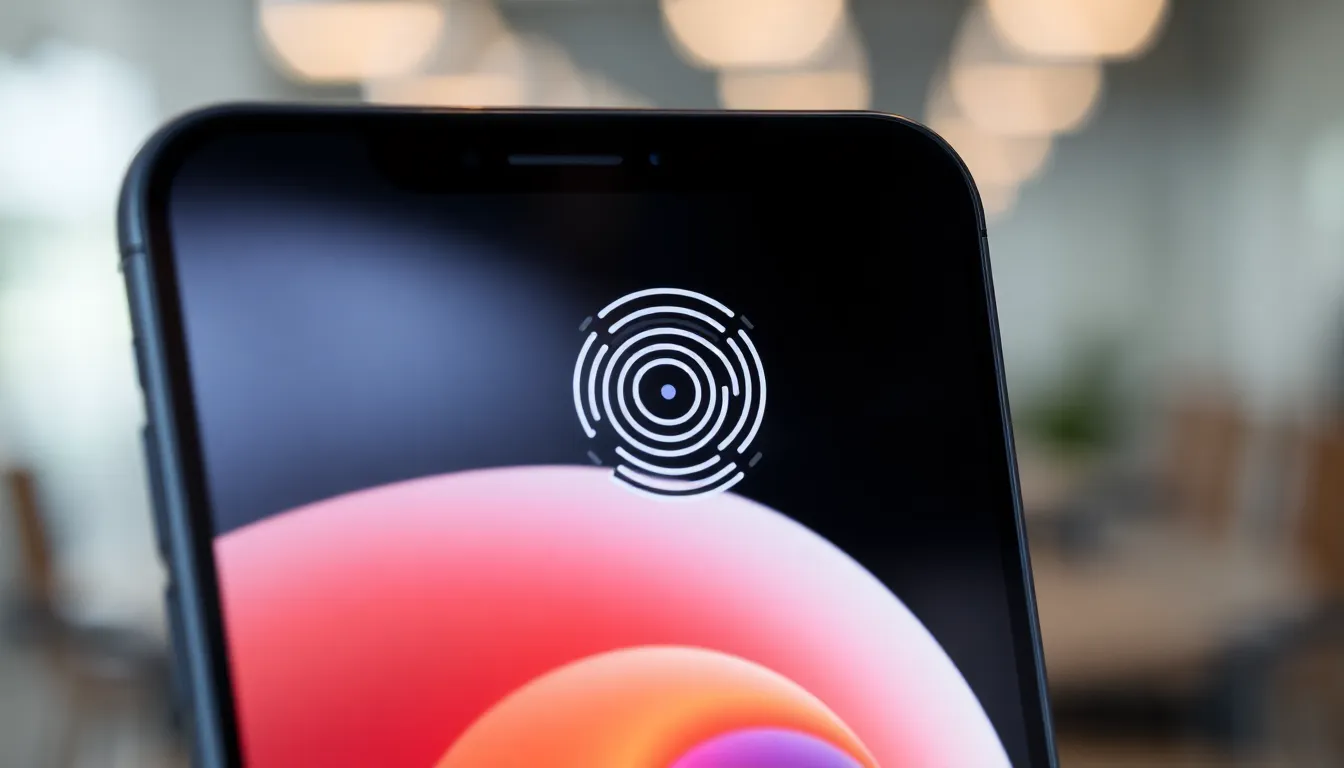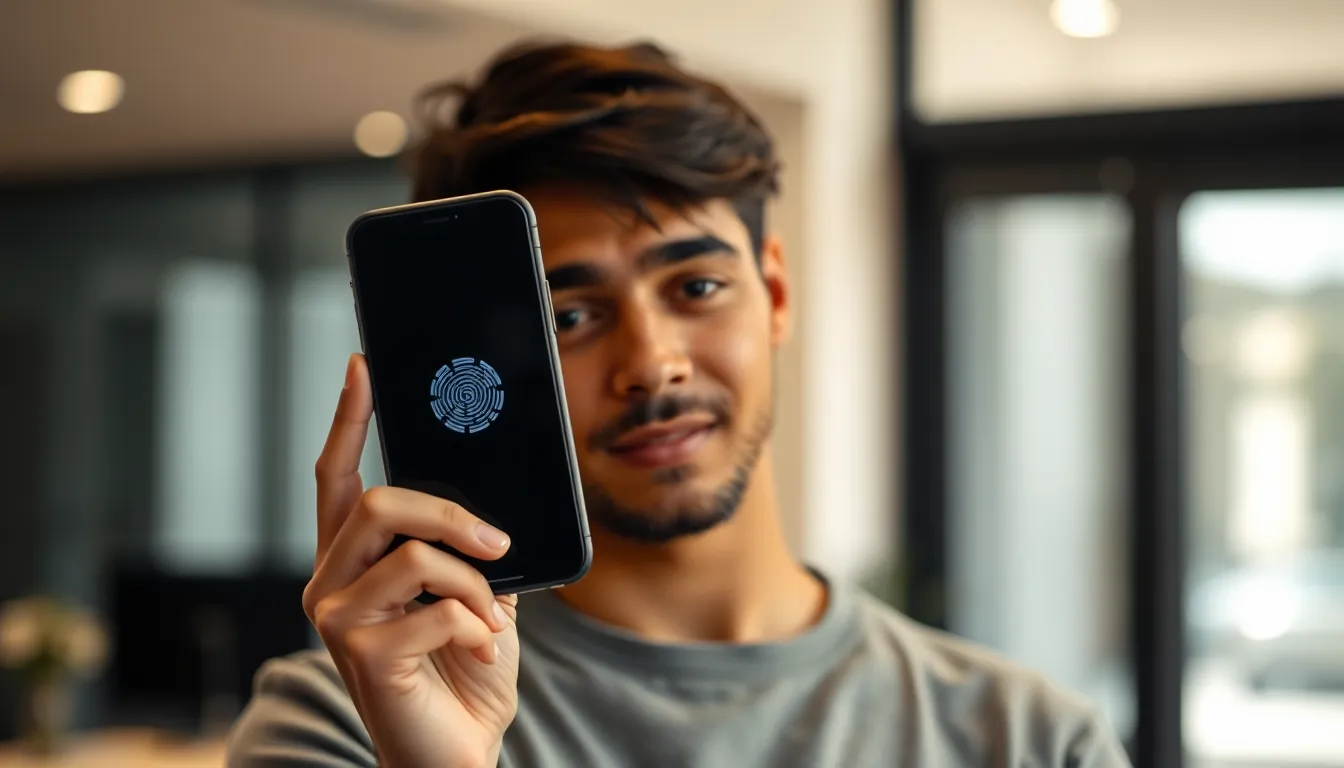Table of Contents
ToggleIn a world where passwords can be forgotten and fingerprints can get smudged, facial recognition on the iPhone is like having a personal bouncer for your digital life. Imagine unlocking your phone with just a glance—no more fumbling for codes or trying to remember that one password you swore you’d never forget. It’s not just convenient; it’s downright futuristic!
Overview of Facial Recognition on iPhone
Facial recognition technology on iPhone provides a secure method for unlocking devices, authorizing purchases, and accessing sensitive information. This feature, known as Face ID, utilizes advanced biometrics to ensure safety and efficiency. It recognizes a user’s unique facial features in 3D, enhancing accuracy compared to traditional 2D recognition methods.
This technology works seamlessly in various lighting conditions and can adapt to changes in appearance, such as facial hair or glasses. Users simply look at their device to gain instant access, making it a convenient alternative to entering passcodes.
Security measures significantly enhance data protection. Face ID securely encrypts facial data and stores it in the iPhone’s secure enclave, reducing the risk of unauthorized access. Users benefit from its reliability and ease of use, allowing for quick interactions with apps that require authentication.
Moreover, Face ID integrates effortlessly with various apps, enabling users to make secure payments through Apple Pay and access password-protected applications without needing to remember numerous passwords. The overall functionality of facial recognition on iPhone streamlines daily tasks, offering a blend of security and convenience.
In terms of user privacy, Apple prioritizes safeguarding personal information. Facial recognition data is never shared with third parties, ensuring user control over their biometric information. This emphasis on privacy bolsters confidence in adopting the technology, making facial recognition a preferred choice for many iPhone users.
System Requirements for Facial Recognition

Facial recognition on an iPhone depends on specific system requirements to function effectively. Understanding these requirements ensures users can leverage this advanced technology.
Compatible Devices
iPhones with Face ID technology support facial recognition. This includes models such as iPhone X, iPhone XR, iPhone XS, iPhone 11, iPhone 12, iPhone 13, and iPhone 14. Each of these devices features the necessary hardware to utilize the 3D facial mapping capabilities. Not all iPhones support this feature; devices prior to iPhone X lack the required sensors for facial recognition. Users should confirm their device compatibility before attempting to set up Face ID.
iOS Version Needed
Running the latest iOS version improves the effectiveness of facial recognition. Face ID requires at least iOS 11 for optimal functionality. Each software update from Apple enhances security features and user experience. Keeping the iPhone updated ensures access to the latest security patches and performance improvements. Users can check their iOS version by navigating to Settings, then tapping General and About.
Step-by-Step Guide to Set Facial Recognition
Setting up facial recognition on an iPhone enhances security and convenience. Follow these steps to configure Face ID effectively.
Accessing Settings
Start by opening the Settings app on the iPhone. Scroll down and select Face ID & Passcode. Enter the passcode for the device when prompted. This step grants access to the Face ID setup options. Ensure the iPhone is updated to the latest iOS version to support all features.
Enabling Face ID
Select the option to Set Up Face ID. Position the iPhone at eye level and tap Get Started. Move your head in a circle to capture facial features from various angles. After the first scan, follow the prompts for a second scan to enhance recognition accuracy. Complete the setup by tapping Done once both scans are registered.
Configuring Face ID Options
Navigate back to Face ID & Passcode options to customize settings. Users can enable or disable features such as iPhone Unlock, App Store, and Apple Pay. It’s essential to review these options for tailored security and accessibility. Access to these configurations offers flexibility based on personal preferences and usage scenarios.
Troubleshooting Common Issues
Common issues can arise with Face ID on an iPhone. Addressing these problems ensures a seamless experience.
Face ID Not Working
Face ID may not function due to various factors. Dirty front-facing cameras can cause recognition issues. Users should clean the camera area with a soft cloth to ensure clarity. Furthermore, strong lighting conditions or obstructions, such as hats or glasses, may hinder detection. Changing environments can affect performance, so moving to a better-lit area can help. If problems persist, restarting the device often resolves minor glitches. Checking for software updates also proves crucial, as updates include fixes for known issues.
Settings Not Saving
Settings not saving can occur after configuring Face ID. Restarting the iPhone may help refresh system settings effectively. Users need to navigate to Settings and ensure that all changes are saved correctly. Updating to the latest iOS version helps prevent compatibility issues that may arise from outdated software. Another possibility involves verifying that sufficient storage exists, as low space can impact settings reliability. If problems continue, resetting all settings can revert configurations without deleting personal data.
Tips for Enhancing Security
Enhancing the security of Face ID provides users with greater peace of mind. Following some best practices can optimize its functionality.
Best Practices for Face ID
Positioning the iPhone correctly during setup is crucial. Users should hold the device at eye level and ensure good lighting while capturing their facial features. Engaging in facial movements helps Face ID learn various angles. Regularly assessing settings ensures that the feature functions reliably. Updating facial recognition data after significant changes, like hairstyles or accessories, improves accuracy. Users also benefit from setting up an alternative appearance, which adds a backup method for accessing their device.
Additional Security Features
Utilizing other security measures enhances overall protection. Two-factor authentication acts as an extra layer, safeguarding Apple ID and sensitive data. Enabling Find My iPhone ensures the device can be located if lost or stolen, providing reassurance. Setting screen time restrictions adds control over access to specific apps. Users should also consider using secure passcodes alongside Face ID for essential accounts. Regular updates to the device’s software bolster security by fixing vulnerabilities, ensuring the latest protections are in place.
Facial recognition on the iPhone offers a seamless blend of security and convenience. By utilizing Face ID users can unlock their devices and access sensitive information with just a glance. This technology not only enhances user experience but also prioritizes privacy by securely storing facial data.
With the proper setup and regular updates users can enjoy the full benefits of this advanced feature. Troubleshooting common issues ensures that the system remains reliable and efficient. By following best practices users can maximize the security of their devices while enjoying the futuristic ease that comes with facial recognition technology. Embracing these advancements makes everyday tasks simpler and safer.



